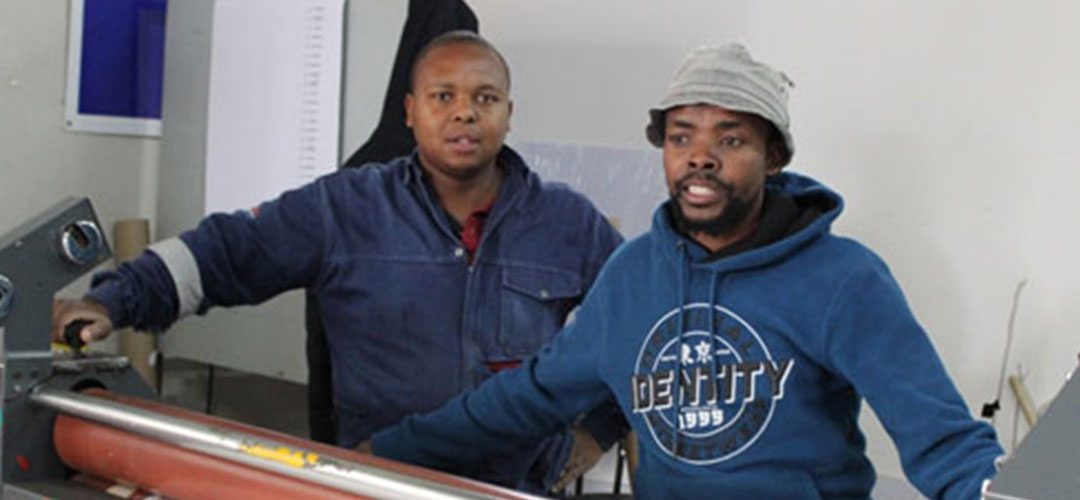If you think printers are just for posters and business cards, it’s time to meet the flatbed printer: the unsung hero quietly transforming modern interior design. Forget “just print and stick”; this technology lets designers print directly onto almost anything: wood, metal, glass, acrylic, stone, even tiles. And that means walls, furniture, and décor are no longer just decorations… they’re statements. Flatbed Printing in Interior Design is a gamechanger when it comes to creating custom spaces, we are about to show you how.
What Exactly Is Flatbed Printing in Interior Design?
Good question. In layman’s terms, a flatbed printer works like a giant, high-tech inkjet that can print on hard surfaces instead of paper. Sound dreamy? It is. Designers use it to create custom finishes, textures, and patterns on a variety of flat materials, which opens up a world of creative possibilities. From printing a photo-realistic marble pattern on acrylic to adding your brand’s logo onto a wooden reception desk, this technique is redefining what’s possible in interior spaces.
Where Flatbed Printing Shines
Googling ‘interior design printing techniques’ at 2:00am while scrolling on Pinterest trying to identify modern interior design trends with flatbed printing? Don’t think we don’t know what you get up to (wink wink). But look no further, here are a few creative ways interior designers are using this tech to add texture, personality, and wow-factor to almost any living (and professional) space:
Bespoke Wall Art That Actually Fits the Space
Instead of buying generic canvas prints, designers are using flatbed printers to create wall pieces that match the tone, texture, and dimensions of the room they have been hired to zhush up. Think botanical motifs printed directly on glass panels or minimalist line art brought to life on brushed aluminium. The flatbed printer for interior use has revolutionised the way we design spaces, and we can guarantee that you’ll love it – especially if you are a designer or a homeowner looking for the best ways to bring your space to life.
Custom Furniture Finishes
A flatbed printer for interior use can print directly onto tabletops, cupboard doors, and even headboards. Want a distressed wood effect without the sanding and staining? Or a terrazzo pattern that doesn’t weigh a ton? Done and done. Your time is precious, and flatbed printers are here to ‘get-the-job-done’ without you having to spend your lazy Sunday afternoon elbow deep in sandpaper.
Statement Ceilings and Panels
Architectural panels are having their moment -> and flatbed printing has just strolled up to the party to give them even more personality. Designers are now experimenting with bold ceiling panels, textured dividers, or 3D illusion prints that add depth without the price tag of carved materials.
Branding That Blends In (Beautifully)
For commercial interiors, flatbed printing is the go-to for subtle, integrated branding. Logos or design motifs can be printed directly onto reception counters, glass doors, or wooden partitions – creating sleek, durable, and totally on-brand client-experiences that’ll have them banging their credit cards on the counter to work with you, simply because the space made them feel so *lit up.
Tiles and Glass With a Twist
Forget plain white tiles. With flatbed printing, you can now get intricate geometric patterns, scenic backdrops, or abstract designs printed onto glass or ceramic surfaces. This is puuuurfect for hotel bathrooms, kitchen backsplashes, or spa-inspired home retreats. With a good-ol’ flatbed at your side, the world literally is your oyster.
Why Designers Love It ~
I mean, I’m sure you can see why already. Flatbed printing materials for interiors are as varied as your Pinterest boards – from eco-friendly wood panels to metal, glass, and acrylic. You really can do it all. The real magic is in the precision: every line, gradient, or texture comes out crisp and consistent, which means no more unpredictable paint jobs or wallpaper peeling drama. I mean. It doesn’t get more perfect than that. And because modern flatbed printers use UV-cured inks, the results are fade-resistant and durable, even in high-traffic spaces. Translation: your masterpiece is safe from sunlight and scuffed shoes (and if you’re a mom, I know how relieved you must be feeling right ‘bout now).
Flatbed printing in interior design isn’t just a trend. It’s the future of modern design that makes a lasting impression without eating up the budget or those precious hours in your day. It bridges art, architecture, and technology, giving designers the freedom they have always craved to play with materials in ways that used to be impossible.
So next time you see a wood panel that looks painted by hand or a glossy countertop with a seamless printed pattern, you’ll know: that’s not luck. That’s a flatbed printer doing its thing — quietly, creatively, and beautifully.

